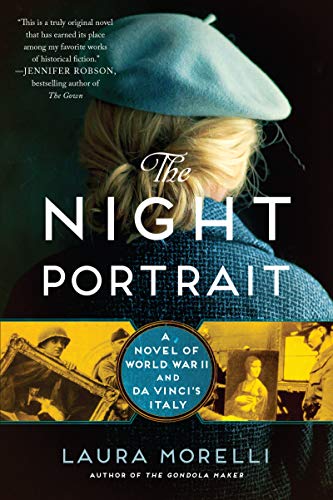The Night Portrait
Art historian Morelli immerses us in 15th-century Renaissance Italy and the mind of young Leonardo da Vinci as he paints Cecilia Gallerani, sixteen-year-old mistress to Ludovico il Moro, Duke of Milan. More enigmatic than the Mona Lisa, this masterpiece, Lady with an Ermine, the first modern portrait, shows the mind and personality of its subject. The portrait’s creation and preservation become the focal point of the story connecting the destinies of two women 500 years apart, and a symbol of hope.
Edith Becker, a Munich museum conservator, is assigned to assess and document valuables looted by the Nazis under Hans Frank, the Butcher of Poland. Hitler is amassing art for his high command and grand museum at Linz. Though disgusted, she keeps her head low, vowing to save this portrait. This novel stands out as a departure from the many WWII books about concentration camps and the Nazi occupation.
Despite dual timelines and four points of view, the story unfolds flawlessly. Richly detailed and well crafted, the chapters are short and tight. So fluid is the writing, we are caught up unawares. Morelli employs a unique device I call “echoing,” ending one chapter with the start of another: “Yes, Cecilia thought. It is time for me to leave this house. And this man [Ludovico il Moro]” and “It is time for me to leave this house, and most of all, this man [Hans Frank], Edith thought.”
American G.I. Dominic Bonelli is appointed to assist the Monuments Men, curators, art historians, and architects recovering art and artifacts plundered by the Nazis. Morelli foreshadows Edith and Dominic’s meeting. As the Allies enter Munich to cheering crowds, Dominic notices an old man (Edith’s father) clutching a stuffed toy dog. Art is the high point of civilization; war the lowest. The end is poignant and uplifting.










